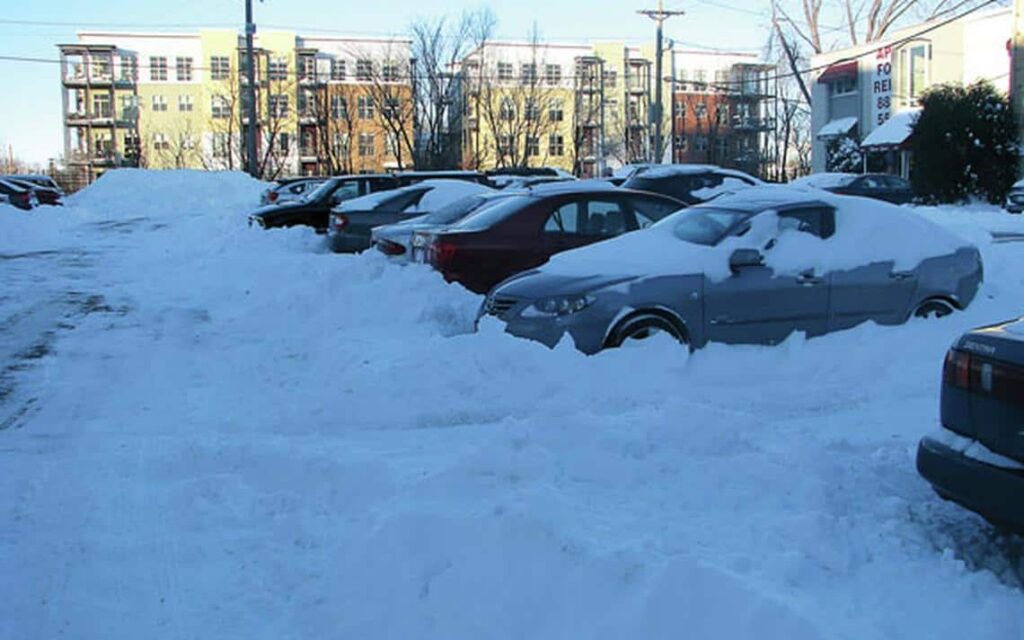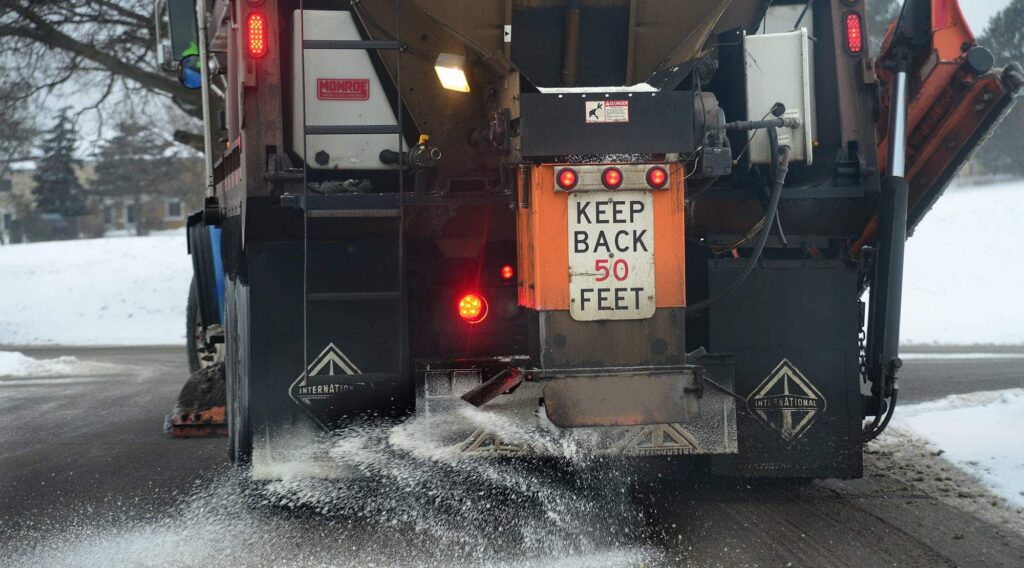New England winters are notorious for fast-moving weather systems that can suddenly drop several inches of snow or ice. Warm days that start to melt snow, followed by frigid nights that re-freeze the snowmelt, make icing a significant problem.
Having the right products on hand to melt ice is necessary before the storms hit. Ice poses a danger on driveways, parking lots, sidewalks, and any surfaces where slip and fall accidents are a possibility. The following guide will discuss the necessities for keeping your property safe during the winter months.
The Basics of Ice Melting

Heavy snow removal is necessary before using ice melting products. Whether the area is small enough to be done with a traditional shovel, a snowblower, or commercial snow removal machines, the snow has to be removed so that ice melting materials can come into direct contact with the ice.
If you are a residential or commercial property owner, it is crucial to create a snow preparedness plan. The last thing you will want is to deal with customers or employees complaints due to the lack of efforts in snow and ice removal.
Ice and snow usually go through several freeze and thaw stages, which need an ice melt product that prevents re-freezing. Calcium chloride is one of the best and safest products for preventing re-freezing of wet surfaces.
Most ice melts are some combination of calcium chloride, magnesium chloride, or sodium chloride. They are all ice melting salts and work much the same way. Calcium chloride is a popular choice because it melts ice at a lower temperature.
The Most Effective Ice Melter Methods

When winter conditions turn brutal, you need a plan for snow and ice melt. Chloride can be damaging to concrete and asphalt over time, causing it to crack and deteriorate. To minimize the damage done by ice melting salt, experts recommend mixing your ice melt with a safe abrasive like sand. This reduces the amount of salt on the pavement and provides traction to prevent slip and fall accidents.
For the most effective results from ice melt, place it in layers. A thin layer before a storm, followed by another light layer after the storm, will give you better results than a heavy layer after the snow or ice has formed. Let’s not forget about refreeze. Preventing refreezing helps reduce damage to concrete that occurs due to repeated refreezing and thawing. If you are interested on methods for ice control, here is how you can use water management and salt for refreeze.
Using the environmentally friendly movement has led numerous manufacturers to label their products as environmentally friendly. These products usually contain calcium magnesium acetate as a coating on rock salt. However, the coating melts, leaving you with overpriced rock salt.
Salt is harmful to landscaping, grass, and trees. It can harm a plant’s ability to soak in the proper nutrients. Scoop up salt after each storm and dispose of it in the garbage. Salt is also a danger to pets, causing burns and inflammation.
Be careful not to track salt into your home or business. The salt mixture can leave an unsightly mess and eventually break down the fiber in carpets. Stone and masonry floors can have their surfaces deteriorated and pitted, and the abrasive nature of the salt can scratch wood flooring.
To prevent damage, put heavy-duty mats near entryways. The salt will stick to the mats, reducing the amount that makes it into your home or business.
Safest Ways to Melt Ice

Sodium chloride, which is rock salt, is one of the oldest salts used to melt ice. It is inexpensive and readily available but is only effective down to twenty degrees Fahrenheit. Sodium chloride is also harmful to pets and will kill plants and shrubbery.
Calcium Chloride is one of the fastest and most effective ways to melt ice. It is effective down to negative twenty-five degrees Fahrenheit and takes less product to be effective. Over time, it can cause pitting in concrete and can cause some yellowing of plants when used heavily.
Potassium chloride and Urea are commonly considered safe around vegetation. These options are a bit more costly and less effective at extreme temperatures. Overall, they are safe and effective options with little environmental damage.
Magnesium chloride is less corrosive than calcium or sodium chloride. It starts to work fast but dilutes more quickly and becomes less effective. After years of use, it can cause pitting in concrete.
Acetates, such as sodium acetate and calcium magnesium acetate, are commonly used on runways at airports. It remains active down to zero degrees Fahrenheit and gives off heat as it dissolves, making it one of the fastest de-icing methods. It works by causing ice molecules to stok sticking to one another, reducing the formation of ice. CMA is one of the most ecologically safe de-icers available.
Remember, it all starts with snow removal. Snow melting is a cost-effective alternative to reduce time spent on snow removal. As and extra tip, here is how you can increase the efficiency of snow removal operations with snow melting.

